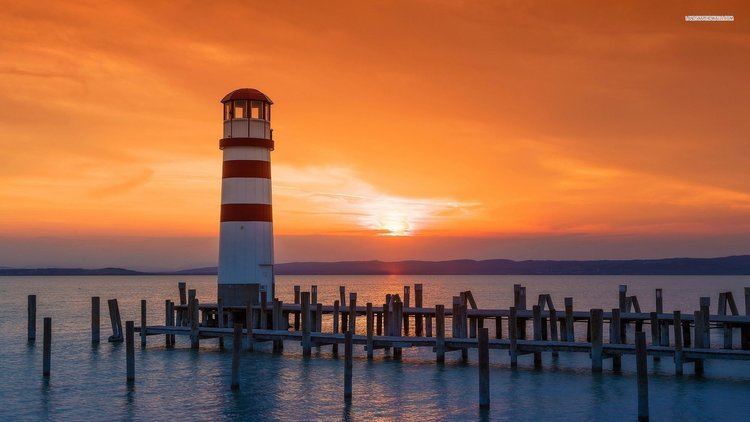Time zone CET (UTC+1) Population 2,078 (1 Apr 2009) | Elevation 121 m (397 ft) Postal code 7141 Local time Wednesday 11:04 AM | |
 | ||
Weather 13°C, Wind NW at 11 km/h, 71% Humidity Points of interest Freizeitpark Podersdorf, Weingut Schaller, Windmühle Podersdorf, SEGpark Podersdorf, Ältestes Wegkreuz von Pode | ||
Podersdorf am See (Hungarian: Pátfalu) is a market town in the district of Neusiedl am See in Burgenland in the east of Austria on the shore of the Neusiedler See. It is home to a windmill and lake (pictured below).
Contents
Map of 7141 Podersdorf am See, Austria
The town is a local center of tourism with generous bathing facilities. Originally a tiny peasant dwelling owned by the Heiligenkreuz Abbey, the economy is now based on tourism and quality wine making.
Geography
Podersdorf is located on the eastern shore of Lake Neusiedl, 121 meters over the sea level. It is the only village where access to the lake is not impeded by mud reed growth. The region between Neusiedl am See and Hungary is known as Seewinkel and is part of the Little Hungarian Plain. This flat and mostly treeless Puszta with numerous small lakes and ponds shows a unique flora and fauna. The town is part of the national park Neusiedler See-Seewinkel. 2001, the cultural landscape has been appointed World Cultural Heritage.
History
Discoveries from the Stone Age and Bronze Age show that the area around Podersdorf has been populated for a very long time. 9 AC the province 'Pannonien' was established. Deforestation of oak woods by early dwellers lead to the bleak Pusztalandscape that predominates today. Podersdorf was regularly exposed to raiding horse people like the Huns, Magyars or Avarst. In the 13th century the earl Poth took over Podersdorf and Potzneusiedl, what explains the name change from Altdorf to Podersdorf. In the Schengen document of the year 1217, which was an evidence of the donation to the Cistercian Order instructed by King Andreas II, the village was evidenced by documents for the first time.
Until 1919/20, Podersdorf was named 'Patfal' and was part of Hungary. After the First World War, Burgenland was named Deutsch-Westungarn (German-West Hungary) in the 1919 Treaty of St. Germain and the Treaty of Trianon and was awarded to Austria in 1919. Since 1921, the town has been part of the newly founded State of Burgenland.
Tourism
Podersdorf is the biggest most popular touristic town within the Seewinkel. The village is favored by ornithologists, water sport enthusiasts and nature lovers. The protected pannonian landscape and the countless local Heurigen serve as destinations for cyclists and hikers.
